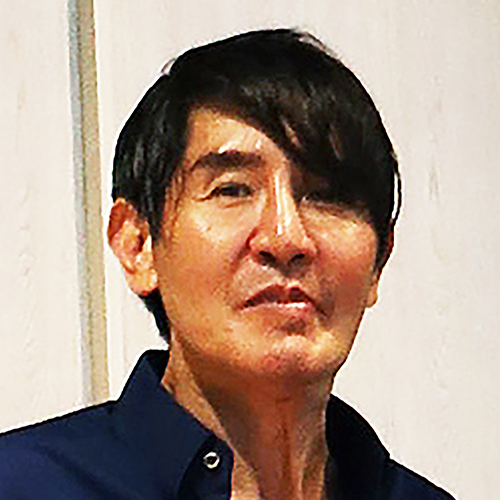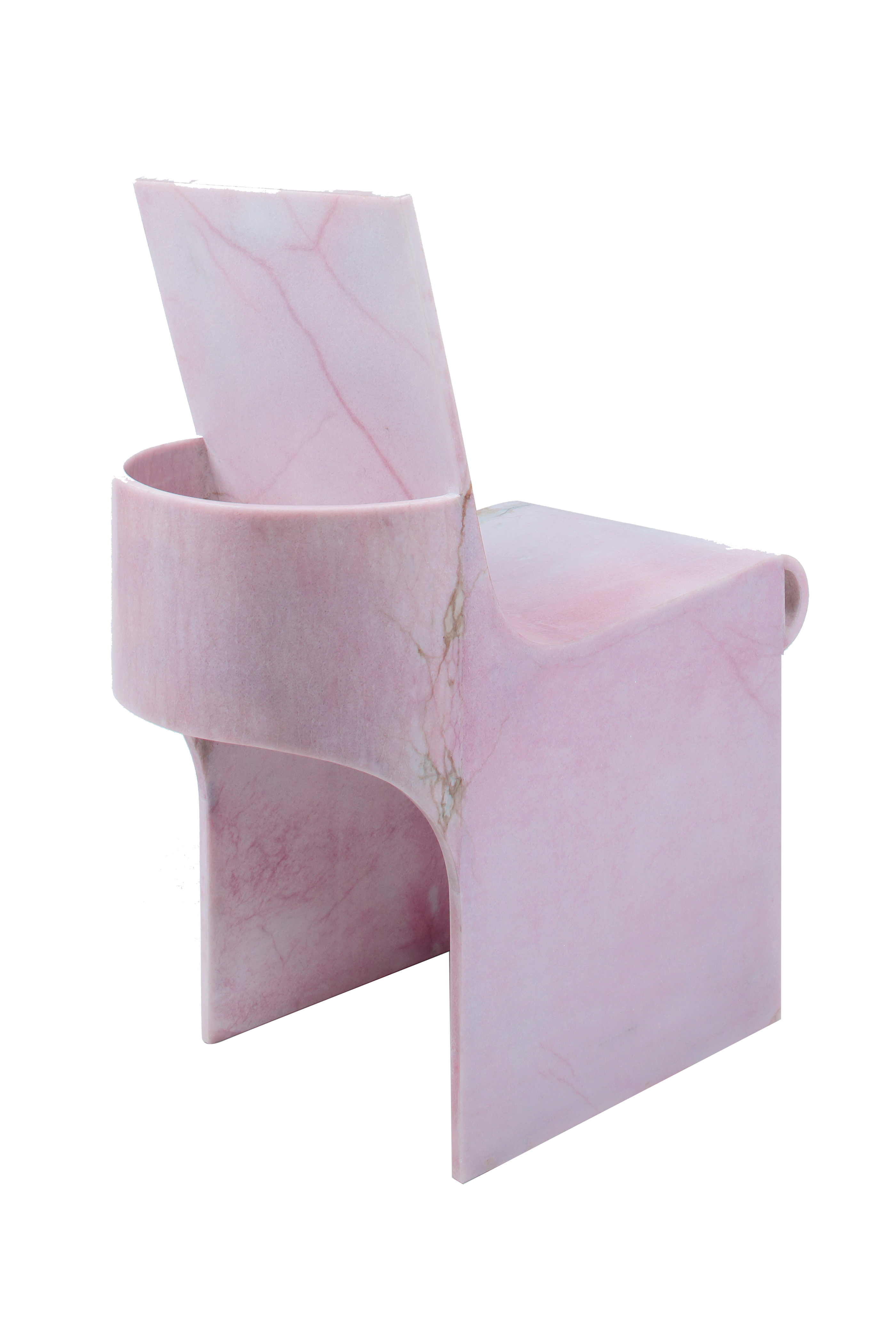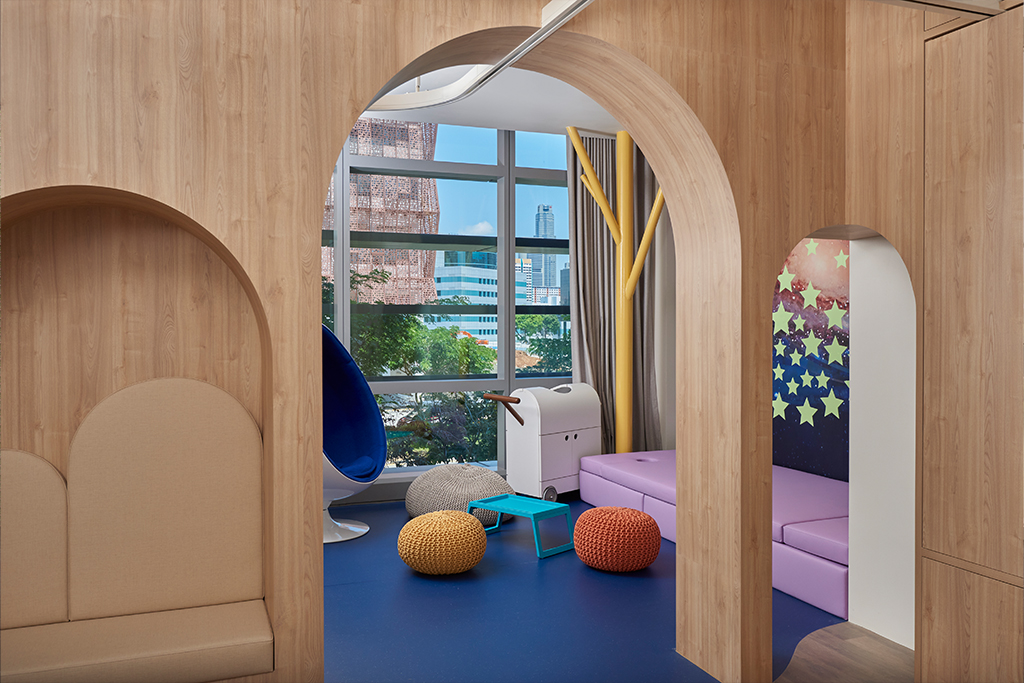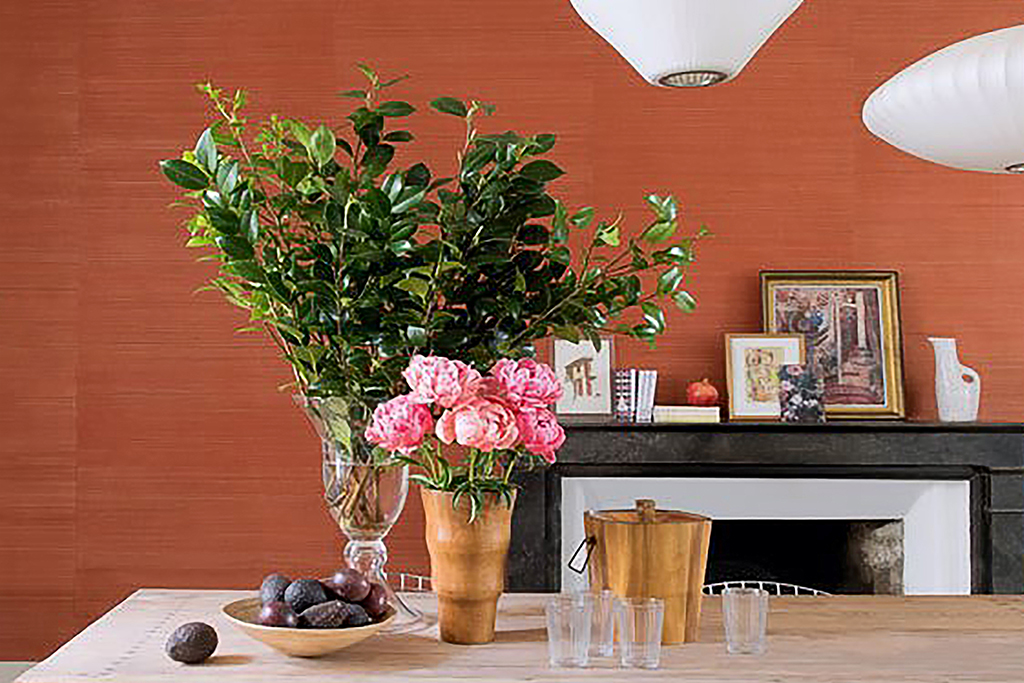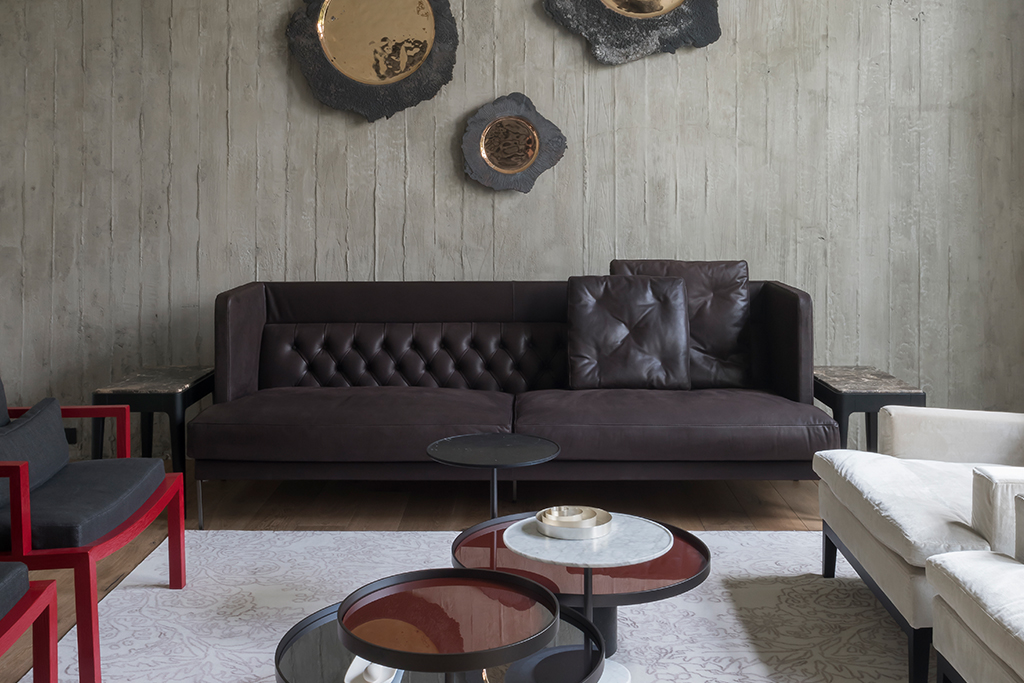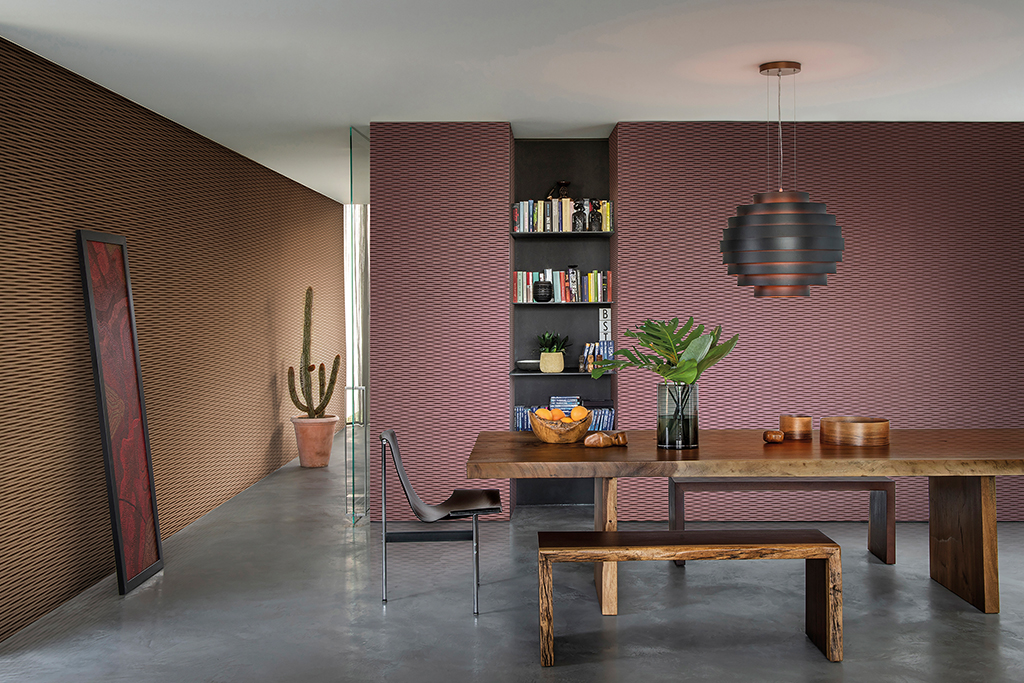Penthouses thrive on bringing the outdoors in. Because they are located on roofs, they came to have large open spaces around. The...
Read MoreDRB team of industry experts from left Keat Ong, Colin Seah, Peter Tay, Nathan Yong and Kelley Cheng.
When Singapore-based Design and Research Bureau (DRB) conducted its first workshop in August 2018, the event was attended by China’s design practitioners who not only marveled at Singapore’s architecture but were privy to design-centric lectures by our industry experts.
The immersive experience includes three intensive days of master classes and two days of guided tours to prominent buildings in Singapore, surveying architectural and interior spaces.
Forging industry relations beyond Singapore
DRB, a design sharing platform was initiated by a team of award-winning Singaporean architects and designers; Keat Ong, Kelley Cheng, Nathan Yong, Colin Seah and Peter Tay, who are also speakers at the sharing workshops.
Ong who is also the President of Society of Interior Designers, Singapore envisioned DRB’s role as a platform to bridging ties within the industry. “For many years, I’ve been trying to bridge the English-speaking world to the Chinese one and vice-versa for the interior design fraternity. Through my personal capacity and on a larger platform like trade association (SIDS), there were many past successes and an enormous increased in interactions between the two worlds in the forms of symposiums, study tours, business missions and awards ceremonies. We hope to establish Singapore as the vital link between the East and West,” says Ong.
China is one audience to focus on fostering and linking industry practitioners from the region in line with China’s One Belt One Road (OBOR) initiative. Ong pointed out that while China has long surpassed Singapore in terms of execution and resources, the “Singapore Brand” is respected because of its solid foundation in creativity and professionalism.
“The best way forward for Singapore is to focus on building strong relationships with our Chinese counterparts and all along the OBOR corridor. It is always difficult for us as a small nation to go at it ourselves, but by with a strong and able team mate, we can go far,” says Ong.
There are three to four workshops slated yearly to establish a successful model of skill transfer to participants. Each session is kept intimate at up to 20 attendees where the speakers can interact with the audience easily. Additionally, the site visits embedded in the program allows the participants a more cohesive learning experience.
Plans to reach to the ASEAN countries in the near future is under way. We check in with our experts on what makes them tick.
Well grounded
Multi-disciplinary designer Keat Ong is the Managing Director of Nota Design Group. The design consultancy has firm roots in China having managed award-winning projects in the country for more than a decade.
Ong who is also the President of Society of Interior Designers, Singapore having led multi-award winning projects which include the Changsha City Museum, Changsha City Library, H3 Experience Centre in Yunnan and two museums in Yueyang underway.
Ong’s recent project Lion’s Den Hotel in Pingjiang County China mixed modern architecture with a sustainable and highly contextual approach. The structure presents a series of minimalist cabins as a nature-centric retreat.
Enclaved within a 12 metre high terraced slope and flatland which consists of small hills and knolls, the site was key in the design’s development. When viewed from the main road, the development looks like a group of lions’ dens in the backdrop with an alpha lion guarding the front.
“We as designers should respect the different cultures and regions that we are working on to develop a strong sense of critical regionalism. This is especially more true for a small nation like Singapore where our designers should be known for our malleability in creativity.”
– Keat Ong
Zi Has any particular period or architect influenced your aesthetic?
Keat Ong (KO) Back in the 90s when I was in Architecture school, I had a few heroes. They are people like Neil Denari, Tom Mayne, Wes Jones, Shin Takamatsu, Renzo Piano and many a few others. These are architects whose works are very different from one another. Thus, I thank these masters for developing my eclectic sense of aesthetic in my formative years in design.
Zi What are your design ethos? Did they evolve on a more subconscious level?
KO We can argue forever in this topic but I never thought design is art at all, it’s bigger than art – it’s applied art. It takes a lot more resources to train a designer than an artist as any creative idea needs to be backed by very solid researches and technical knowledge.
Many years of training and practice helps me developed an ever increasing maturity in the ways I decipher wild, loose creative ideas into realistic end-products/spaces that are relevant to the project’s location.
Zi How would you define the aesthetic of the Singaporean design?
Zi Beside my professional practice, I have been teaching in universities as well. The thing I’ve always been reminding my students is for them not to fall into the trap of cultural baggage. As humans, we don’t forget our roots of where we came from or grew up in, but as designers, we shouldn’t get entrapped by our races and our ethnicity when it comes to creativity.
On the contrary, we as designers should respect the different cultures and regions that we are working on to develop a strong sense of critical regionalism. This is especially more true for a small nation like Singapore where our designers should be known for our malleability in creativity.
Zi Do you think buildings/interior should be rooted in the context and topography where they are planned?
Zi Yes, as mentioned earlier… a sense of critical regionalism is very important when it comes to designing for a culture or region foreign to us. Other than the socio-political culture, topography is another very important consideration especially for architectural projects.
In fact, I’ve just completed a group of hotels in China that “meanders” around and “hovers” lightly on the 3.4 square km hilly site.
Zi What do you hope to contribute to the local interior design scene?
KO For many years, I’ve been trying to bridge the English-speaking world to the Chinese one and vice-versa for the interior design fraternity. Through my personal capacity as well as a larger platform like trade association (SIDS), there were many past successes and an enormous increased in interactions between the two worlds in the forms of symposiums, study tours, business missions, awards etc. We hope to establish Singapore as the vital link between the East and West.
Zi If you could change ONE thing in the local interior design scene – what would it be?
KO I would love to have the interior design profession to be legislated. As it’s not, the task of accrediting the profession now falls in the hands of my team and I.
Against the grain
As the founder of and Director of Design for design consultancy Ministry of Design, Seah has been named as Designer of the Year by International Design Awards USA in 2010 and a two time recipient of Singapore’s President Design Award and Grand Prize winner of the Gold Key Award. Seah has been invited by the Singapore Tourism Board to redefine Singapore as a destination for 2020 and beyond.
Seah has led over 100 projects internationally. The studio’s projects include Vue Hotel Houhai Beijing, Vanke Triple V Gallery, UOL Edge Gallery, Tangs Flagship Store, Zig Zag House and RACE Robotics Lab.
The VUE Hotel brand exemplifies the new wave of locally-rooted boutique hospitality experiences, a global cultural phenomenon now finding roots in China. “VUE” in French means “a way to see” and VUE hotels aspire to present a fresh way of interpreting hospitality design and experiences. VUE’s DNA upends conventional Chinese notions of hospitality and is defined by four core pillars: 1. Encourages Socialising; 2. Transcendence of culture; 3. Delightful & Whimsical; 4. Relaxed & Inviting.
“Our work has also strived to provide alternative way of seeing convention. Perhaps this could prove inspiring to some.”
– Colin Seah
Zi Has any particular period or architect influenced your aesthetic?
Colin Seah (CS) The work, and writings of Rem Koolhaas of OMA… but not so much my aesthetic but but Creative process.
Zi What are your design ethos? Did they evolve on a more subconscious level?
CS Question, disturb, redefine. To question convention and through the process of design, to redefine it.
Zi How would you define the aesthetic of the Singaporean design?
CS Singaporean design is as varied as its cultural landscape. But perhaps one common thread is the desire to adapt existing norms to our own cultural context, be it with food, architecture or even product design.
Zi Do you think buildings/interior should be rooted in the context and topography where they are planned?
CS If the context is significant or relevant, then yes.
Zi If you could change ONE thing in the local interior design scene – what would it be?
Zi It would be great for Singapore to be a nation which collectively appreciates and desires a high quality of design, in the built environment and otherwise. This would make design more treasured across the board, from the humble HDB apartment to the most important public space.
Peter Tay
The founder and Design Director of Peter Tay Studio, Tay explores duality and interchangeability in his architecture and interior projects with clients Richard Mille, Manolo Blahnik, Armani Casa and Poliform.
Tay a recipient of the President’s Design Awards Designer of the Year in 2014, is also an educator and a keen supporter of design. He has been lecturing for the past 12 years at various design institutions. In 2013, Tay published his monograph, which was launched in Kyoto, Hong Kong and Singapore in the same year. His “Time-Space-Existence” exhibition at Palazzo Bembo at the Venice Biennale, Italy in 2014 was supported by XTRA Designs and the Design Singapore Council.
Tay is well known for his work on celebrity homes, and his list of clients includes Wang Leehom, Stephanie Sun and Zoe Tay.
Best known for his sleek yet luxurious approach to design, Tay’s designs are contemporary and timeless, and at the same time, they encapsulate the pure essence of space that delicately accentuates the lifestyles of his clientele.
This penthouse at Sentosa Cove, is designed to capture and maximise the views of the surrounding context with its open plan layout and its selection of materials and furniture. Subtle movements on the surface of the water and changes in light can be seen and felt from the interior space, which subtly dissolves the boundaries between the external environment into the internal space.

The interior finishes–such as the Brazilian Rosewood, Hermes grey marble flooring and the furniture pieces have been curated to accentuate the experience of coastal front living by complementing the colours and textures of the surrounding, to allow the beautiful views at Sentosa Cove to take centrestage.
Pitch perfect
As a multi-award winning industrial designer, Nathan Yong runs his eponymous design consultancy studio. Yong is the co-owner of furniture store Grafunkt and also a lecturer in Product Design at LASALLE College of the Arts. He has received numerous awards, amongst them the President’s Design Award in 2008. Yong’s clients include Design Within Reach, Ligne Roset, Living Divani, Opinion Ciatti, Sphaus , Domicil and Ethnicraft.
His solo exhibition “In The Scheme of Things: Nathan Yong – A Retrospective Show 1999 – 2019” at the National Design Centre marked his journey as an industrial designer and showcased 40 of his works both past and new.
Soft Chair is the start of Yong’s new collection and slated to launch in Milan 2020. The chair is made from bended marble, a patented technology which allows the stone to be malleable. Its curved back and ‘blocky’ appearance asserts a brutalist approach, a style first emerged in the 1950s and gained popularity in the early-20th century modernist movement.
Yong chose pink to “soften” and complements the chair’s masculine geometric style. Plans to commercialise the chair as limited editions is under way.
“I hope foreign students will understand the values of Singapore design and able to incorporate it into their design.”
– Nathan Yong
Zi Has any particular period or architect influenced your aesthetic?
Nathan Yong (NY) Yes, the modernism and brutalism influences me a lot.
Zi What are your design ethos? Did they evolve on a more subconscious level?
NY Yes, I am guided by my values of how I view life as a whole, be it being respectful to materials and people or having a good integrity in a design.
Zi How would you define the aesthetic of the Singaporean design?
NY As it is subconscious, I don’t really know how to define it myself. These are things that have to be felt by others. Otherwise they are just contrived schemes. I would say that I am quite true to myself and very authentic as a person. So my upbringing as an Asian, living in a tropical weather, in an efficient country, shape me who I am. And that in return shape my habit, values and belief.
Zi Do you think buildings/interior should be rooted in the context and topography where they are planned?
NY Yes for sure. The adage “We are who we are” is defined by our geography, ethnicity, culture and social. Pretending to be who we are not lacks honesty and integrity, and I don’t believe that is a good basis for a healthy space or mind.
Zi What do you hope to contribute to the local interior design scene?
NY I am very lucky and thankful for what I had achieved so far. Many have helped me along the way with or without them knowing. So I continue to push myself to be better so that I can contribute to others no matter how small it might be. I hope to keep on challenging myself by doing projects that is unexpected.
Zi If you could change ONE thing in the local interior design scene – what would it be?
NY I hope clients have more faith with the designers they appoint. To do that, they themselves have to understand what design is all about, what it can or cannot do so that they know how to find the right designer for them. Many clients go into a project blindly, and have the tendency to think that as long as they are paying, designers have to bend to their whims. It takes two to make a project successful.
Kelley Cheng
An architectural graduate turned polymath, Kelley Cheng is the founder and Creative Director of publishing and design consultancy The Press Room.
Cheng’s activities range from magazine editor, public speaker and art gallery owner to designer. The Press Room, a multidisciplinary studio which designs books, brands, graphics, documentaries to spaces, stages and film sets. Her projects include the Youth Olympic Games, i Light Marina Bay Light Art Festival, Singapore Pavilion at the World Expo 2012 Yeosu Korea and National Gallery Singapore, President’s Design Award 2013 and 2016.
In collaboration with Studio Milou Architects, The Press Room won the President’s Design Award 2015 for the National Gallery Singapore brand design. An active educator, she had served as adjunct lecturer in Visual Communications at the LaSalle College of the Arts and Glasgow School of Art, Singapore; she is also a frequent name on international design judging panels Red Dot Awards, Nagoya-Do!, Creative Circle Award, James Dyson Award, etc. Cheng recently celebrates her 20-year career with a solo exhibition at the National Design Centre.
“Contractors and interior designers are two very different profession, and I hope that there will be some measure to draw that boundary so that works of contractors do not get misrepresented as interior design works.”
– Kelley Cheng
Zi Has any particular period or architect influenced your aesthetic?
Kelley Cheng (KC) So many! As with most architectural students, I was in awe of the Modernist great masters like Le Corbusier, Mies van der Rohe, Frank Lloyd Wright – I learnt that good designs can be distilled down to the fundamentals – geometry, proportion, textures, materials.
I was also influenced by the Deconstruction movement, from people like Rem Koolhaas, Daniel Libeskind, Peter Eisenman – I learnt how to use concepts as drivers of design.
Zi What are your design ethos? Did they evolve on a more subconscious level?
KC I believe in the distillation of design down to the most essentials of good proportion and composition, authentic textures and materials – but these are qualities that can be trained over time. So yes the subconscious is very important – of using intuition and emotion in design, that will give that special something to your design.
Zi How would you define the aesthetic of the Singaporean design?
KC It is almost impossible to design what a country’s overall design aesthetics is, e.g. how do you define the aesthetic of London, Barcelona or New York? It is equally difficult. And this is probably because design itself is a universal language, like music. Hence it transcends geography and nationality.
DCRS Do you think buildings/interior should be rooted in the context and topography where they are planned?
KC Architecture naturally responds to site and culture, so yes it is rooted in context and topography. Interiors might be less so.
Zi What do you hope to contribute to the local interior design scene?
KC I feel that it takes a whole community to evolve a design industry and scene, we all can play our part by constantly pushing boundaries and doing good design.
Zi What do you hope to achieve from the DRB sharing programmes?
KC Hopefully the DBR programmes can bring new insights to seasoned designers and new inspiration to the young designers.
Zi's Top Picks
Dujiangyan Bookstore In China Is Fairytale-like And Surreal
Located west of Chengdu in the Sichuan province, the bookstore features gravity-defying staircases and infinite bookshelves which looks like it came straight...
Read MoreRustic B&B In Xiamen Is A Traditional Architecture Urbanised
Located in Dazhai Village, Xiamen, Xiangyu Xiangyuan B&B is steeped in traditional Fujian architecture fused with contemporary touches. The 1 200 square...
Read MoreInside A Mid-century Modern Style Hospice Designed For End-of-life Caregiving
The mid-century modern style of interior design was popularized during the 1940s, and remains popular for good reason. Defined by clean lines,...
Read MoreMore on Articles
The Trends Edit
Deciphering the winds of change is a tricky business. Of course, one of the most stylish ways to spruce up your space...
Read More10 best living room ideas for statement design
The living room is the first space one sees upon entering a residence. It is also a glimpse into the personality of...
Read MoreWall Decoration Simplified
Move over, paints. When it comes to making a big and bold flat-surface treatment, wallcoverings are the quickest and most transformative way...
Read More










